This list is outdated; see our Raspberry Pi Christmas Shopping Wishlist 2018
If you’re completely new to the Raspberry Pi, here are my recommendations for UK purchases for Christmas 2016.
All prices include VAT and mainland UK P&P unless otherwise stated. Prices correct as of 17 Nov 2016.
Amazon links include an affiliate tag for which profits go to Cotswold Raspberry Jam to spend on equipment to promote coding & electronics for children.
Don’t forget our next event is Sat 28 Jan in Cheltenham – find out if free tickets are available yet.
The Raspberry Pi 3
 • Raspberry Pi 3 – £30.49
• Raspberry Pi 3 – £30.49
The Raspberry Pi 3 Model B is the version of Raspberry Pi that is suited to the vast majority of uses. It’s also the fastest version with the most memory. It has a quad-core processor and a gigabyte of RAM, meaning that it can be used as a desktop computer for browsing the web (including watching YouTube videos, Twitter and Facebook), wordprocessing (with LibreOffice, which is compatible with Microsoft Office) and programming. Its fourty GPIO pins can be used to control electronics such as LED lights and robots. It has four USB sockets so you can have a mouse, keyboard and wireless internet dongle all plugged in at once.
Version 3 (this one) also includes built-in WiFi wireless internet and Bluetooth.
You will also need, at minimum, a power supply, an 8GB Micro SD memory card, a HDMI cable, a keyboard and a mouse. Below I’ve listed some kits that include all of these, or you can look at my recommendations for individual items.
You will also need a HDMI TV or computer monitor. I haven’t listed those as there are just too many to choose from. Any flat screen TV or computer monitor with a HDMI socket will be fine..
Bundles and Kits
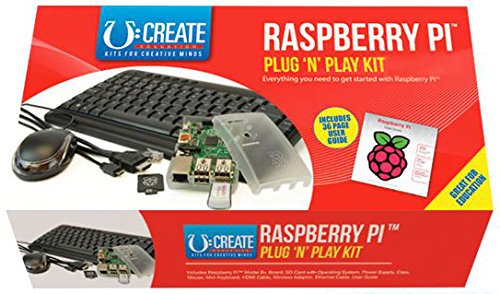 • U:Create Raspberry Pi 3 Plug and Play Kit (Amazon) – £61.99
• U:Create Raspberry Pi 3 Plug and Play Kit (Amazon) – £61.99
• or same kit from CPC – in case Amazon are out of stock – same price
• or similar kit with not-quite-as-good keyboard but better case from Pimoroni – in case both the above are sold out – go for the Coupé one (see Coupé case below) – £70 + £2.50 P&P
This is, frankly, a brilliant kit, very well thought out, and has everything you need to get started. It’s not the absolute cheapest way to get going with Raspberry Pi, but it’s within a fiver or so, and what you’re paying for is the expertise of someone making all the right choices for you. This kit includes the Raspberry Pi 3, a case, a power supply, a good compact keyboard that has all the necessary keys, a mouse, a HDMI cable, a network cable and a memory card with all the files set up on it. Just plug in to your HDMI TV or computer monitor and you’re good to go. Highly, highly recommended if you don’t have a clue about computers, or if you’re a parent who wants to guarantee that everything will “just work”; this is the no-tears solution for a child’s present. It’s also nearly ten quid cheaper than the lower-spec version 2 was last year – grab it while you can.
Add the book Adventures in Raspberry Pi (£10.49) and your child will have everything they need to get started, so long as you’ve already got a HDMI telly or monitor; you can stop reading here if you’re short of time.
 • Raspberry Pi 3 Official Desktop Starter Kit – £42.99
• Raspberry Pi 3 Official Desktop Starter Kit – £42.99
This kit, from the Raspberry Pi Foundation charity itself, includes the Raspberry Pi 3, the official case, the official power supply, and a memory card with files already on it. You’ll still need a HDMI cable (try Poundland), and keyboard and mouse (try Wilkinsons, or see below for keyboard recommendations).
Display cable
Check whether the TV or monitor that you intend to use, has a HDMI port. If so, get a HDMI cable from Poundland or Wilko. Don’t pay more than a fiver. The ones and zeroes either get there or they don’t, so there is no point in buying a more expensive cable.
If you have a flat-panel computer monitor without a HDMI socket, you can buy a HDMI to DVI cable (£3.99). Note that this won’t carry sound to the monitor; you will need to use speakers or headphones.
If you have a really old VGA monitor, get a HDMI to VGA adaptor (£5.99).
Micro SD Card
The Raspberry Pi 3 has no hard drive, it has its operating system on a Micro SD card. The most popular operating system is Rasbpian. Raspbian can be installed onto a Micro SD card either by using the NOOBS tool (very easy, but slightly inefficient and wasteful) or by downloading Raspbian directly (more difficult).
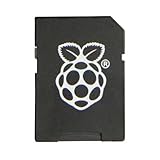 • NOOBS – £6.29
• NOOBS – £6.29
New Out Of Box Software, ready to go on a good quality 8GB Micro SD card. Also comes with a full-size SD adaptor with the Raspberry Pi Logo. Pick this if you are unsure or not confident..
 • Toshiba Exceria M302 16GB Micro SD – £3.99 (as Amazon Add-On) or £5.59 (single purchase)
• Toshiba Exceria M302 16GB Micro SD – £3.99 (as Amazon Add-On) or £5.59 (single purchase)
A larger, faster, better quality Micro SD card. This card is supplied blank, so you will need to download either NOOBS or the Raspbian operating system. After extensive use at Cotswold Raspberry Jam, we’ve found the Toshiba Exceria range to be, by far, the fastest and most reliable for the money, beating the Samsung Evo range that we previously preferred.
Power supply
 • Official Raspberry Pi Power Supply – £7.75
• Official Raspberry Pi Power Supply – £7.75
The Raspberry Pi 3 consumes between 0.7-1.5 amps depending how good your WiFi signal is (weaker signals require more power) This is more than most basic mobile phone chargers will supply, but if you have a spare 2 amp Micro USB tablet charger, that should work fine. However, if you’re in any doubt, buy this official power supply – unlike many chargers which claim to supply 2 amps, this one is tested and guaranteed to be up to the job. And you won’t find an alternative 2 amp charger for much cheaper anyway.
I used to also recommend the Nokia AC-10x which is only 1.2amps, but a very reliable 1.2amps with high build quality and a good thick cable. If you’re on a tight budget, it’s two quid cheaper and will do the job.
Absolutely do not buy a cheap charger off the local market or an eBay international seller. Nine times out of ten, they don’t supply the amperage or voltage they claim to provide, at least not constantly and reliably. Sometimes the power brick can be fine but the cable poor; sometimes the brick itself is poor. Your Raspberry Pi will start to show a lightning bolt (or rainbow square) warning icon, slow down and have internet connection problems.
Case
You don’t need a case. You can run your Raspberry Pi 3 “naked” with the bare circuitboard. However, with the cables dangling off it, it tends to flop about a bit, plus it’s asking to get bashed, bent or have some dust wedge itself somewhere it shouldn’t.
Cheapest option is free. Print out a case from a PDF file onto thin card. Remember to print with “Page Size: Actual Size” selected in your PDF reader’s print options; this ensures correct fit regardless of whether you use US or A4 paper.
• Slimline “Coupé”-style printable case template
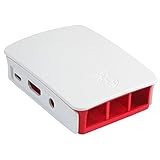 • Official Case – £7.47
• Official Case – £7.47
This is the official case from the Raspberry Pi Foundation. It’s a quirky but flexible design, with pop-out panels to provide access to the GPIO pins, and a removable lid to provide access to a variety of add-ons. Personally, I think it’s okay but I wouldn’t rave about it; the pop-out panels strike me as things which will get lost, and I’m not entirely convinced about the accessibility of the GPIO pins. It’s very popular and good build quality for the price, so maybe I’m just wrong.
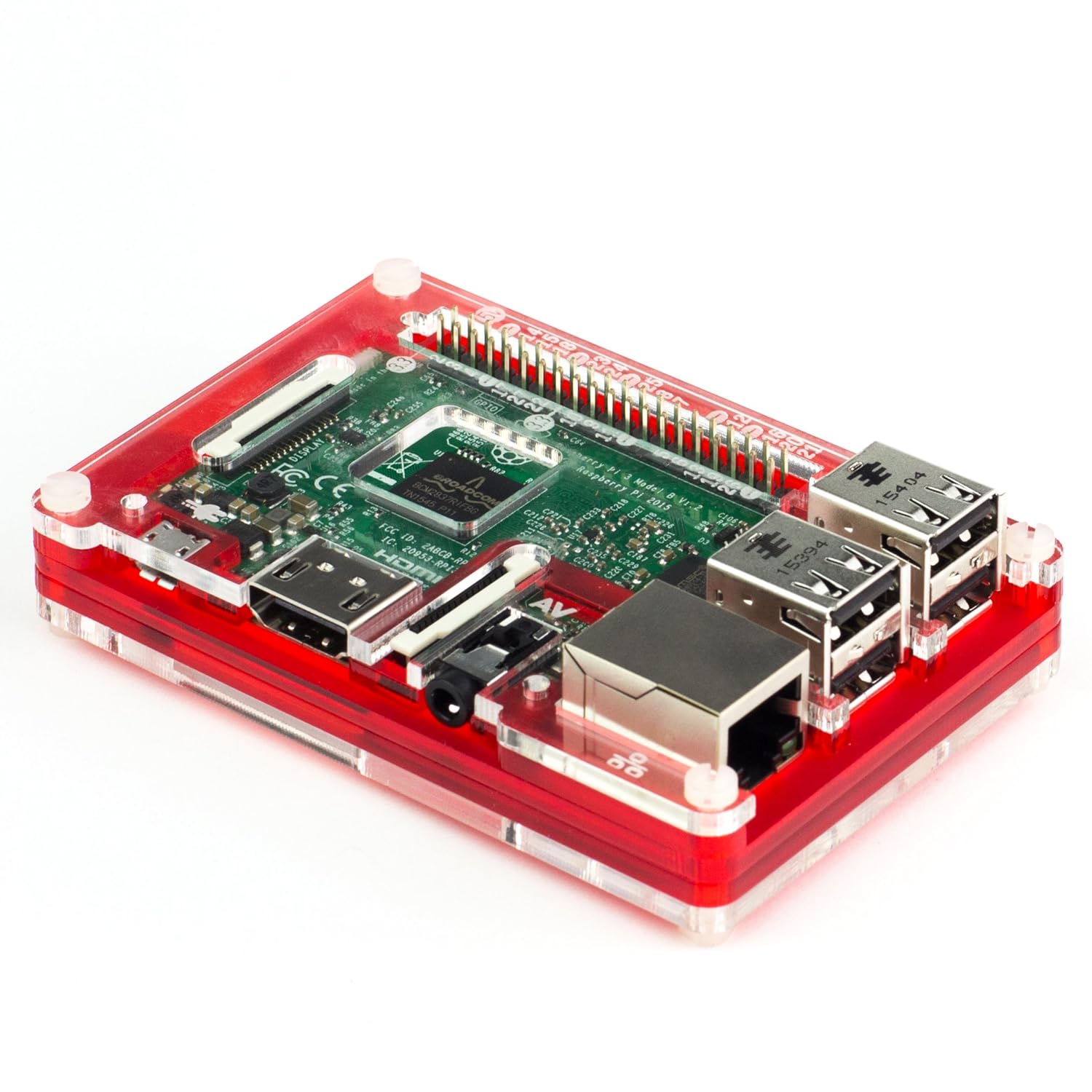 • Pibow Coupé – £8.50
• Pibow Coupé – £8.50
My personal favourite. Very strong build quality and highly accessible design from a company that specialises in Raspberry Pi cases. Easy access to the camera slot and the GPIO pins, plus, the numbers of the pins are etched onto the plastic. Some assembly required, but instructions provided. My tip: put the screws in with the screw heads at the bottom and the nuts at the top, so you can remove the top layer if your camera cable goes awry.
Also available in light blue, black, orange and deep blue.
 • Generic compact clear case – £2.99
• Generic compact clear case – £2.99
Cheap but very cheerful, this is a slimline case that is perfectly practical most of the time. I use this for the Pi that I use as a server. It has screw mount fittings so you can bolt it to a wall, alternatively it is equally at home on a desk. GPIO pins are fully accessible. Slot for camera cable but you have to split apart the casing to thread it through. Recommended if you’re on a budget, or regardless of budget if you intend to just leave your Pi in one place as a dedicated machine.
Keyboards & Mice
Frankly, go to Wilkinsons and buy a cheap USB keyboard and USB mouse. Pay no more than 6 quid for each.
Be sure to get a PC keyboard and not an Apple Mac keyboard. PC keyboards will have a pair of ALT keys whereas Mac keyboards will have a OPTION key. I strongly recommend buying a full-size keyboard.
If you really must buy a compact mini keyboard, be sure there is also a way of typing | (pipe, usually next to Z) ~ (tilde, usually next to Return), Page Down and a PrintScreen- some compact keyboards do not have these, and they matter for Raspberry Pi programming.
Do not get a Bluetooth mouse nor keyboard. You can set up Bluetooth on the Raspberry Pi, but it’s a pain and not a job for a beginner. Non-Bluetooth wireless keyboards and mice will work fine on the Pi 3.
 • Genius Luxemate i200 USB keyboard – £11.99
• Genius Luxemate i200 USB keyboard – £11.99
• Perixx Periboard 407b USB keyboard – exactly the same as the Genius i200 in case that’s out of stock – £11.99
My favourite compact USB keyboard. Easy access to the rarely-used Linux keys such as pipe, tilde, Page Up/Down etc. Nice slight tilt for comfy typing. Good long cable.
I have to be honest, though, I’d prefer a cheap full-sized PC keyboard over a funky compact one any day. If you type for more than a couple of hours a week, you’ll really appreciate a full-sized keyboard.
Books
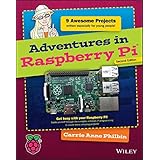 • Adventures in Raspberry Pi 2nd Edition – £10.49
• Adventures in Raspberry Pi 2nd Edition – £10.49
By Carrie Anne Philbin. This excellent, beginner-friendly book, takes you from setting up your Raspberry Pi 3 and basic desktop use, through to programming and electronics. Suitable for children, teens and inexperienced adults.
 • Adventures in Minecraft – £13.48
• Adventures in Minecraft – £13.48
By David Whale & Martin O’Hanlon. This book focusses on learning programming with Python via the Minecraft game. If you are, or have a child who is, obsessed with Minecraft, then the Raspberry Pi allows you to reprogram the world. Write programs to put text on the screen, create buildings and even mechanical items in the Minecraft game world. You can even link electronics in the real world, to affect in the game world. Like the other “Adventures in…” books, this is suitable for children, teens and inexperienced adults, with a few advanced topics for those with moderate skills.
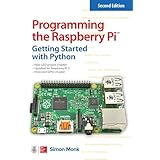 • Programming the Raspberry Pi, Second Edition: Getting Started with Python 2nd Edition – £11.99
• Programming the Raspberry Pi, Second Edition: Getting Started with Python 2nd Edition – £11.99
By Simon Monk. A slightly more serious, yet still beginner-friendly, introduction to coding with the Raspberry Pi using the Python programming language.
Electronics Kits
The Raspberry Pi has what are called “GPIO pins” (General Purpose Input and Output). These allow it to connect directly to electronic components, so you can build lighting systems for your toy town, control robots and much more.
 • CamJam EduKit 1 – £5 + £2.50 P&P from The Pi Hut
• CamJam EduKit 1 – £5 + £2.50 P&P from The Pi Hut
A brilliant low-cost introduction to electronics on the Raspberry Pi, created by our chums over at Cambridge Raspberry Jam. Includes lights, cables, resistors, a switch and buzzer, plus instructions.
 • Adventures in Raspberry Pi – electronics parts kit – £14 + £2.50 P&P from Pimoroni
• Adventures in Raspberry Pi – electronics parts kit – £14 + £2.50 P&P from Pimoroni
Electronics components to accompany Ms. Philbin’s excellent Adventures in Raspberry Pi book.

Electronics components to accompany the electronics chapters of the Adventures in Minecraft book.
Camera
 • Raspberry Pi Camera – £21.40
• Raspberry Pi Camera – £21.40
The Raspberry Pi can have an 8-megapixel webcam attached to it. This uses a special display interface on the Raspberry Pi, so it isn’t a standard USB webcam. The Pi camera gives brilliant still and video images even indoors.
Note that there is a non-Infrared (NOIR) version also available. Avoid the NOIR version unless you specifically want to do nighttime photography or have a specific scientific need; it is little use in daylight.
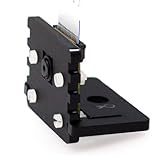 • Camera mount – £4.19
• Camera mount – £4.19
This simple plastic fitting allows the Raspberry Pi camera to be mounted on a standard tripod mount, including cheap mini tripods from Poundland / Wilko.
And Finally – a word about the Raspberry Pi Zero
The Raspberry Pi Zero came out at the end of November 2015, retailing for just 4 pounds. However this is not the ideal introduction to the Raspberry Pi. Compared to the Pi 3, it is significantly less powerful, and will feel very slow if you are used to regular laptops and tablets. It has non-standard HDMI and USB ports.
Don’t get me wrong, it is a great product for the price, and particularly suited to robotics and electronics projects. But if this is your first foray in to the world of Raspberry Pi, save your pennies and get a Raspberry Pi 3 – you won’t regret it.

[…] Andrew Oakley, from the Cotswold Raspberry Jam has written an excellent buyers’ guide for the coming season. He’s covered buying the Raspberry Pi initially as well as other accessories that you need to get going with your programming and hacking. Well worth a look if you’re just starting out, or even if you’re not! Take a look here. […]